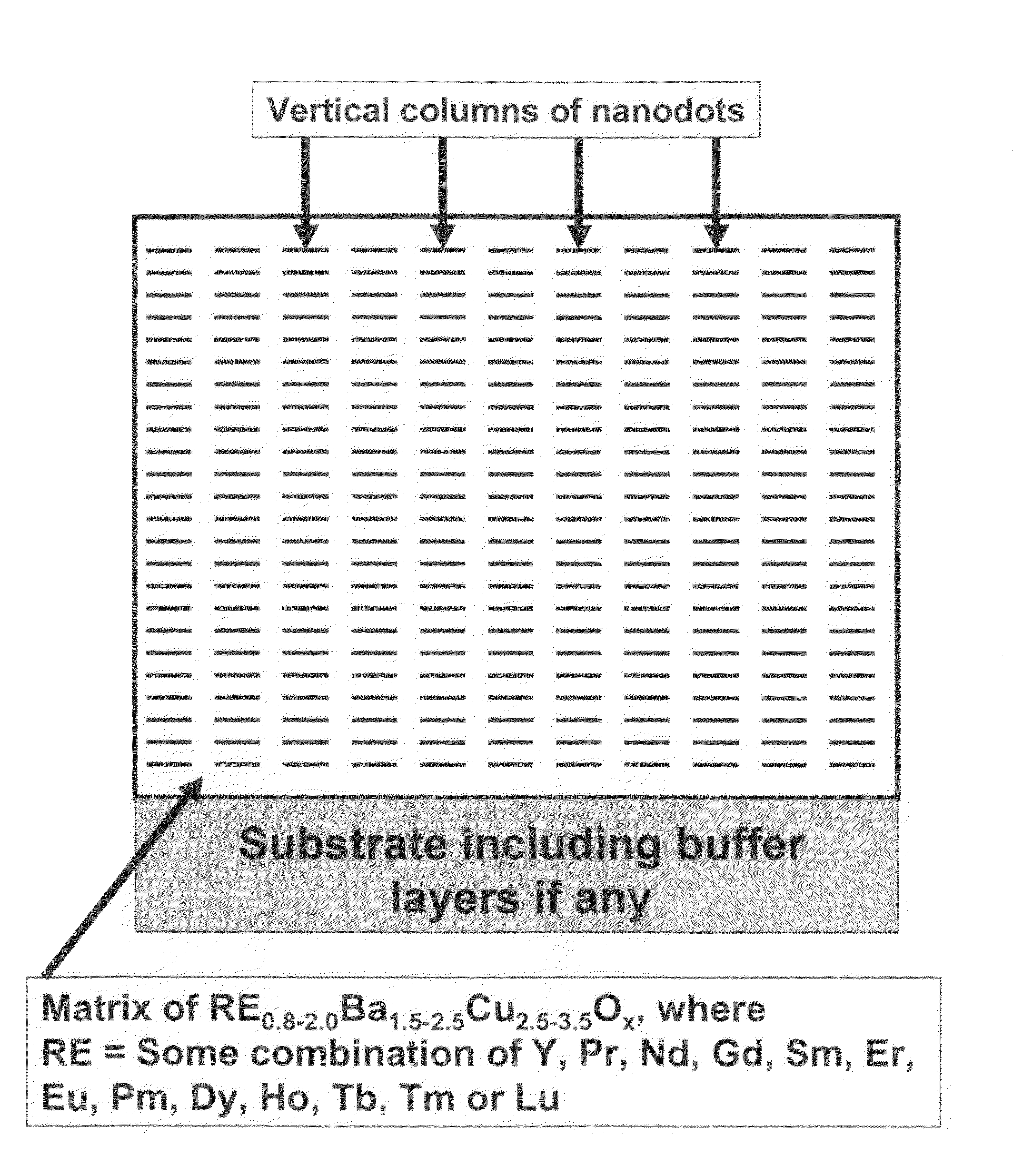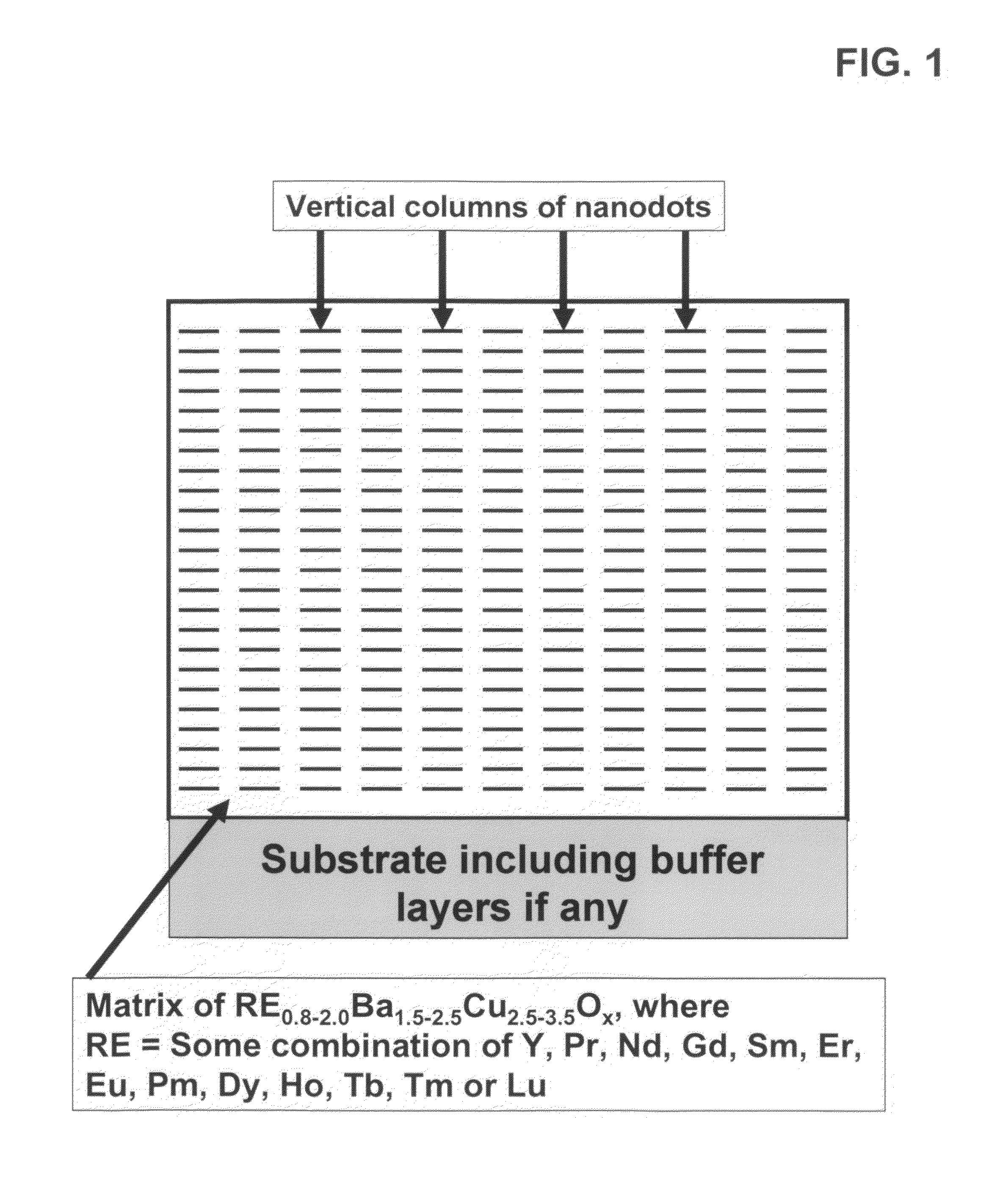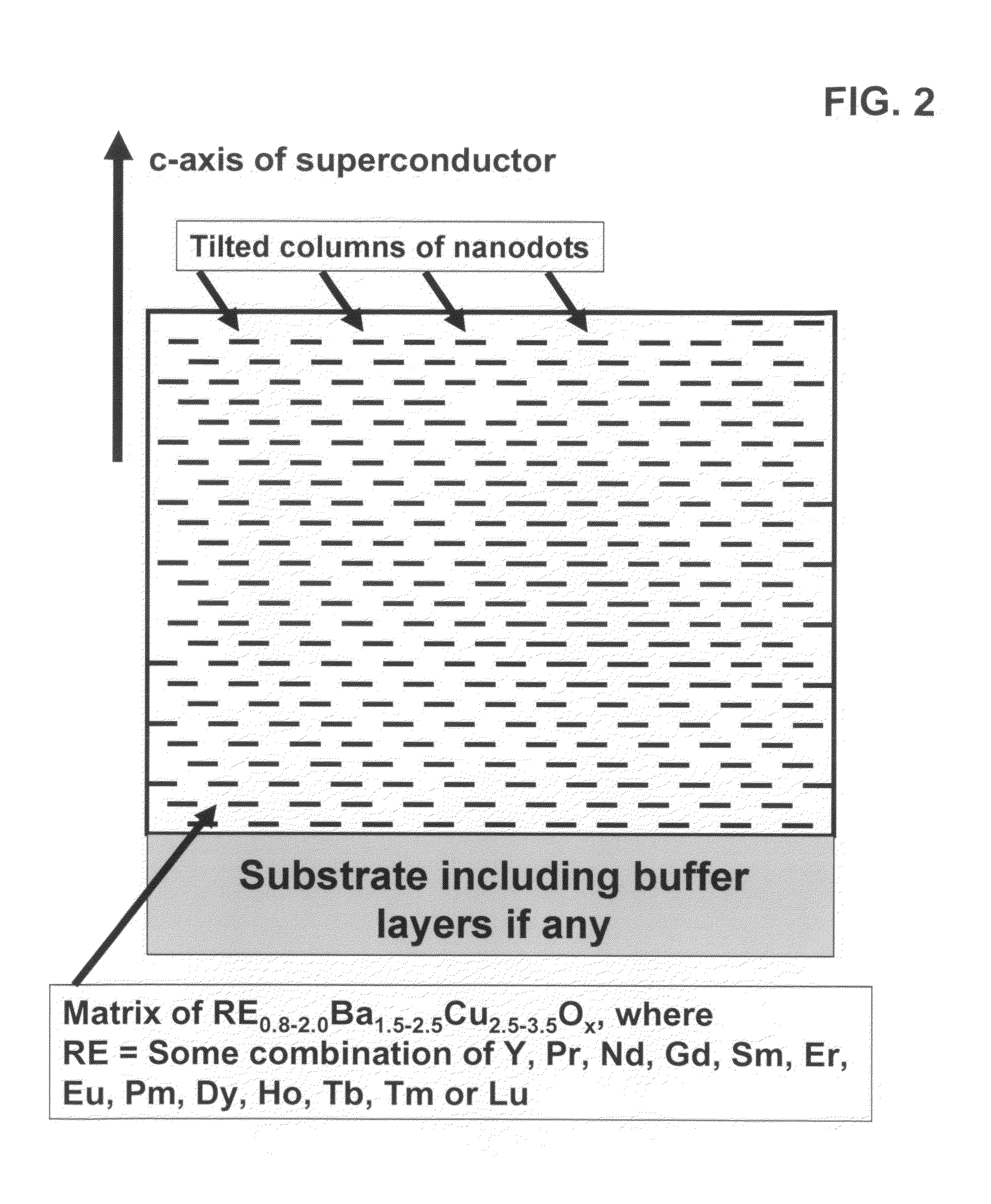High performance devices enabled by epitaxial, preferentially oriented, nanodots and/or nanorods
a technology of epitaxial and nanorods, applied in the direction of superconducting magnets/coils, instruments, magnetic bodies, etc., can solve the problems of inability to retain the magnetization applied to the bit against thermal decay, current media will encounter a physical limit, and the least difficult to achieve. achieve the effect of high performan
- Summary
- Abstract
- Description
- Claims
- Application Information
AI Technical Summary
Benefits of technology
Problems solved by technology
Method used
Image
Examples
example 1
[0050]Self-assembled nanodots and nanorods of non-superconducting phases were incorporated by performing laser ablation from a single target comprising a mixture of YBCO powder and nanoparticles of the chosen non-superconducting phase. Nanoparticles of materials such as BZO, CaZrO3 (CZO), YSZ, BaxSr1−xTiO3 (BST), etc. are commercially available from vendors such as Sigma-Aldrich. These nanoparticles, with a sharp particle size distribution ranging from 10-100 nm, are well-mixed with YBCO powder, via mechanical mixing, then cold pressed to form a green target. The target was then sintered at 950° C. in flowing oxygen. The target is then mounted on the target holder in the pulsed laser deposition (PLD) experimental setup. Depositions were performed on the technically important rolling-assisted-biaxially-textured-substrates (RABiTS) substrates with the configuration Ni-5 at % W (50 μm) / Y2O3 (75 nm) / YSZ (75 nm) / CeO2 (75 nm). PLD depositions were performed using a XeCl (308 nm) excimer l...
example 2
[0055]A 3 μm thick YBCO composite film containing self-assembled nanodots of BZO was prepared by pulsed laser deposition (PLD) using a XeCl (λ=308 nm) excimer laser at a repetition rate of 10 Hz. The 2-vol % BaZrO3-YBCO PLD target (1 inch diameter, 0.25 inch thick) was made by mixing YBCO powder and commercially available BaZrO3 nanopowder. The growth temperature was 790° C. and the base chamber pressure was 2×10−6 Torr with an oxygen partial pressure of 230 mTorr. All depositions were performed in a stationery configuration on the technically important RABiTS substrates with the configuration Ni-3 at % W (50 μm) / Y2O3 (65 nm) / YSZ (185 nm) / CeO2 (30 nm). The Y2O3 layer was deposited using e-beam evaporation and YSZ and CeO2 layers were deposited using rf-sputtering. The standard four-point probe method with a voltage criterion of 1 μV / cm was used for the transport measurements. Cross-section transmission electron microscopy (TEM) was used for microstructural analysis using a Hitachi H...
example 3
[0064]An epitaxial, composite, superconductor film is fabricated on a biaxially textured substrate IBAD with the self-assembled nanodots and / or of BZO using an in-situ deposition process such as PLD, Sputtering, e-beam co-evaporation or MOCVD deposition. Examination of as-deposited film via electron microscopy shows a columnar structure of BZO, either as columns of aligned, epitaxial nanodots of BZO or aligned nanrods of BZO. Over 80% of the columns are preferentially aligned within 60° of the c-axis of the superconductor. The critical current of superconductor film at 65K, 3 T has a minimum in Ic of over than 200 A / cm at all applied field orientations and a JE (min) of greater than 20,000 A / cm2 at 65K, 3 T at all applied field orientations.
PUM
| Property | Measurement | Unit |
|---|---|---|
| diameter | aaaaa | aaaaa |
| diameter | aaaaa | aaaaa |
| thick | aaaaa | aaaaa |
Abstract
Description
Claims
Application Information
 Login to View More
Login to View More - R&D
- Intellectual Property
- Life Sciences
- Materials
- Tech Scout
- Unparalleled Data Quality
- Higher Quality Content
- 60% Fewer Hallucinations
Browse by: Latest US Patents, China's latest patents, Technical Efficacy Thesaurus, Application Domain, Technology Topic, Popular Technical Reports.
© 2025 PatSnap. All rights reserved.Legal|Privacy policy|Modern Slavery Act Transparency Statement|Sitemap|About US| Contact US: help@patsnap.com



